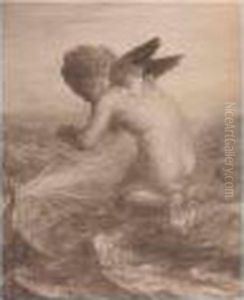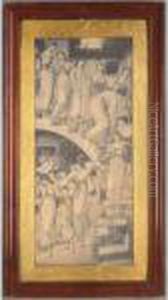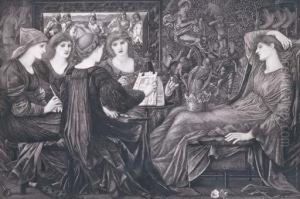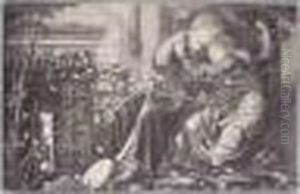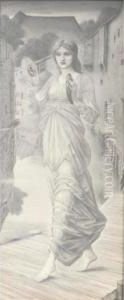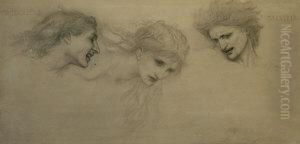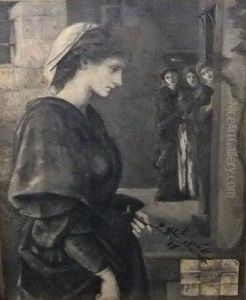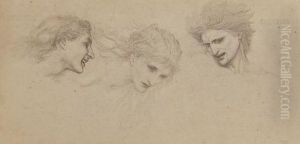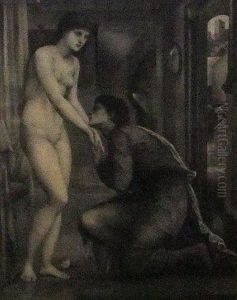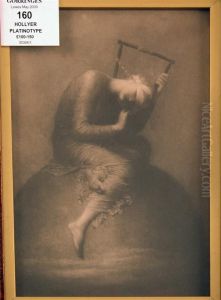Frederick Hollyer Paintings
Frederick Hollyer was an eminent English photographer and engraver, renowned for his significant contributions to the art world during the late 19th and early 20th centuries. Born in London in 1838, Hollyer began his artistic journey following in the footsteps of his father, Samuel Hollyer, who was also an engraver. Initially, Frederick Hollyer's career was focused on engraving, but he soon found his true calling in photography, a field in which he would excel and innovate.
Hollyer's photographic work is best remembered for its pivotal role in the promotion and documentation of the Pre-Raphaelite Brotherhood and their circle. He became closely associated with many key figures of the movement, including Edward Burne-Jones, for whom he produced high-quality photographic reproductions of paintings. These reproductions played a crucial role in popularizing the Pre-Raphaelite aesthetic and making the artwork accessible to a broader audience.
In addition to his work with the Pre-Raphaelites, Hollyer was also known for his stunning photographic portraits of prominent figures of his time. His portrait studio in London became a hub for artists, writers, and socialites seeking to have their likenesses captured by his expert lens. Hollyer's portraits were celebrated for their clarity, depth, and the ability to capture the essence of the sitter, making him one of the most sought-after photographers of his day.
Beyond his contributions to portrait photography and art reproduction, Hollyer was an innovator in the field of photographic techniques. He was one of the early adopters of the platinum print process, which offered a wider tonal range and more durable prints than the traditional silver-based processes. This commitment to quality and innovation further solidified his reputation as a master of his craft.
Frederick Hollyer remained active in the art community throughout his life, contributing to the development of photographic art and its recognition as a legitimate and valuable form of artistic expression. He lived to see the evolution of photography from a mere scientific curiosity to an established art form. Hollyer passed away in 1933, leaving behind a legacy that continues to influence the fields of photography and art history. His work not only provides a valuable visual record of an important era in British art but also stands as a testament to the enduring power of photographic portraiture.
